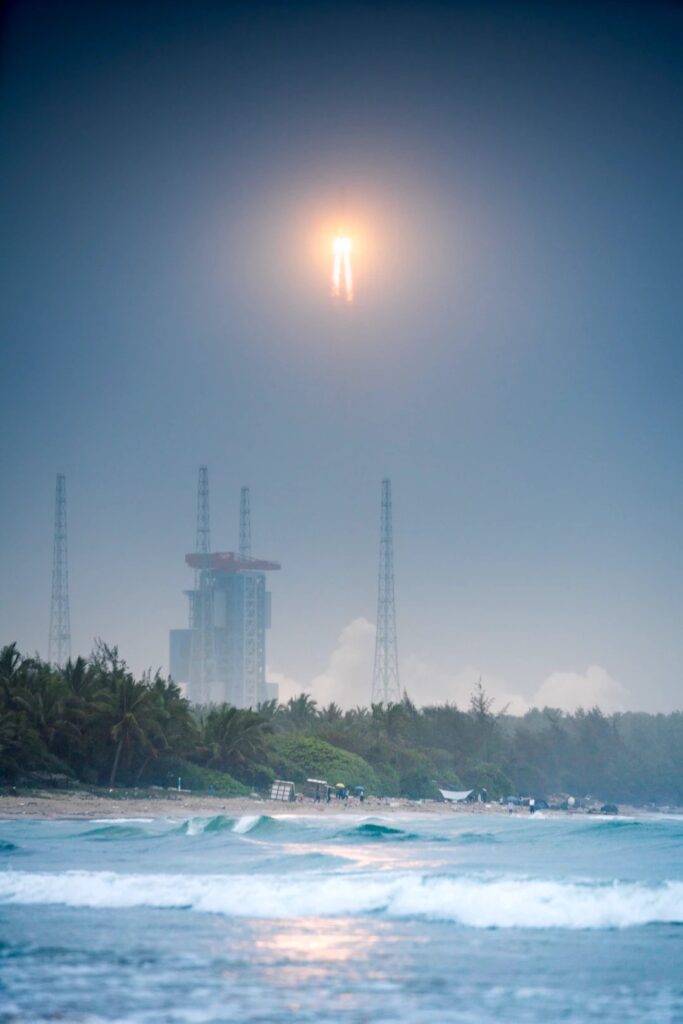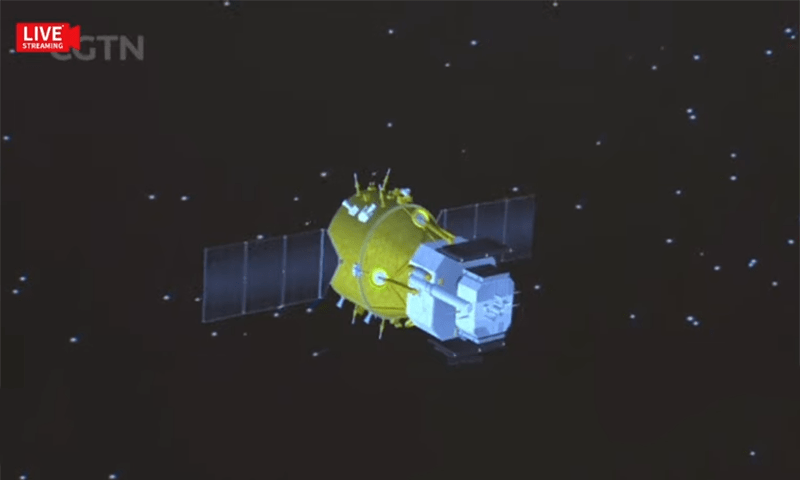- Pakistani satellite part of China’s Chang’e-6 lunar mission launched from Hainan, China
- Chang’e-6 aims to collect around 2kg of lunar samples from far side of Moon and bring them back
ISLAMABAD: Pakistan’s space programme achieved a historic milestone on Friday as the country’s first-ever lunar orbiter lifted off from China’s Henan Space Launch Site.
The Pakistani satellite is part of China’s Chang’e-6 lunar mission, which was launched from Hainan, China, on Friday.
The mission, which aims to explore the moon’s “dark side”, will employ lunar research payloads from multiple countries, including Pakistan’s iCube Qamar satellite.
The launch of satellite ICUBE-Qamar was telecast live from the Institute of Space Technology’s (IST) website.

The journey towards sending a lunar orbiter commenced in 2022, when the China National Space Agency (CNSA), in collaboration with the Asia Pacific Space Cooperation Organization (APSCO), extended an invitation to member states to contribute a student-built payload for the Chang’e 6 mission to Earth’s nearest celestial body.
The Institute of Space Technology (IST) on Tuesday said Pakistan’s “historic” lunar module iCube-Q, which was designed by IST in collaboration with China’s Shanghai University (SJTU) and Pakistan’s national space agency Suparco, will be aboard Chang’e-6.
The mission, dubbed Chang’e, is named after the mythical Chinese moon goddess.
Chang’e-6 aims to collect around two kilogrammes of lunar samples from the far side of the Moon and bring them back to Earth for analysis. Chinese state news agency Xinhua hailed it as “the first endeavour of its kind in the history of human lunar exploration”.

“Chang’e-6 will collect samples from the far side of the Moon for the first time,” Ge Ping, vice director of China’s Lunar Exploration and Space Engineering Centre, told journalists.
China will send a robotic spacecraft in the coming days on a round trip to the moon’s far side in the first of three technically demanding missions that will pave the way for an inaugural Chinese crewed landing and a base on the lunar south pole.
The probe is set to land in the immense South Pole-Aitken Basin, one of the largest known impact craters in the solar system. Once there, it will scoop up lunar soil and rocks, and carry out other experiments in the landing zone.
With no direct line of sight with the Earth, Chang’e-6 must rely on a recently deployed relay satellite orbiting the moon during its 53-day mission, including a never-before-attempted ascent from the moon’s “hidden” side on its return journey home.
On Chang’e-6, China is carrying payloads from France, Italy, Sweden and Pakistan, while Chang’e-7 will bear payloads from Russia, Switzerland and Thailand when it launches in 2026.
Nasa is banned by US law from any collaboration, direct or indirect, with China.
Under the separate Nasa-led Artemis programme, US astronauts will land near the south pole in 2026 — the first humans on the moon since 1972.

A team of scientists with the ICUBE-Q satellite. PHOTO: IST
ICUBE-Qamar
The ‘ICUBE-Qamar’ (ICUBE-Q) was submitted as a proposal for a lunar CubeSat by the IST. The proposal was selected after an evaluation process.
The development of the payload is a collaborative effort between IST’s students and faculty, SUPARCO and China’s Shanghai Jiao Tong University (SJTU).

The ICUBE-Q satellite. PHOTO: IST























